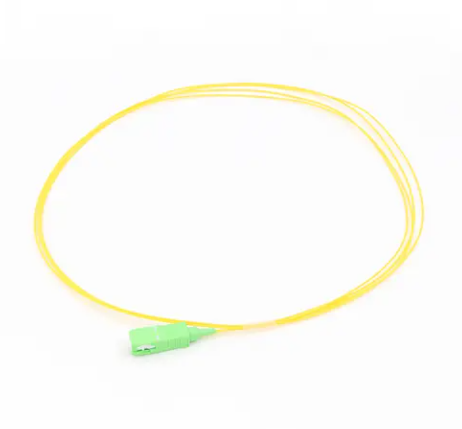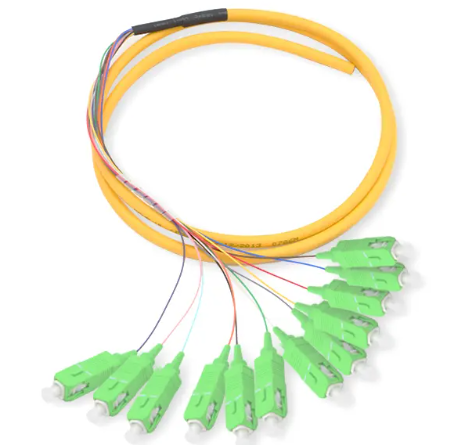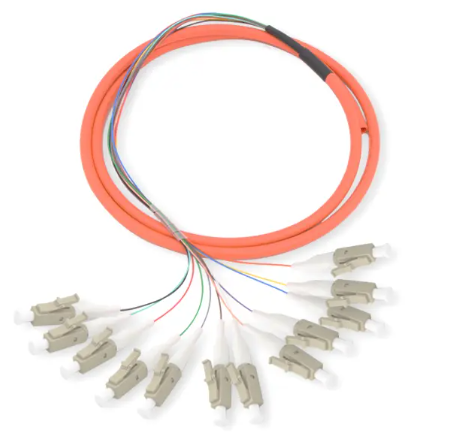OYI International Ltd is a relatively experienced company founded in 2006 in Shenzhen, China, which is engaged in manufacturing fiber optic cables that have helped expand the telecommunication industry. OYI has developed into a company that delivers fiber optic products and solutions of superior quality and therefore fostered the formation of a strong market image and constant growth, as the company's products are shipped to 143 countries and 268 of the firm's customers have had a long-term business relationship with OYI. We have a highly professional and experienced employee base of over 200.
Optical fiber pigtails are important components in fiber optic communication networks. They are short lengths of fiber optic cable with a connector on one end and bare fiber on the other. Pigtails are used to connect optical fibers to various devices or other cables. There are different types of pigtails for different applications. Fiber Pigtail is a general term for these components. Pigtail OPGW Cable is used in overhead power lines, combining power transmission and communication. Pigtail ST SM OPGW Cable is a specific type for single-mode fibers in OPGW cables with ST connectors. Pigtail ST MM ADSS Cable is designed for multi-mode fibers in All-Dielectric Self-Supporting (ADSS) cables, also with ST connectors. These pigtails play a crucial role in linking different parts of fiber optic networks, allowing for efficient data transmission in various settings, from telecommunications to power grid monitoring.


Optical fiber pigtails are widely used in telecommunications networks, which form the backbone of our modern communication systems. In these networks, pigtails serve as crucial connectors between the main fiber optic cables and various network devices such as switches, routers, and servers. For example, in a large data center, hundreds or even thousands of fiber pigtails might be used to connect the main fiber trunk lines to individual server racks. The pigtails allow for flexible and organized cable management, making it easier to install, maintain, and upgrade the network. They also help in reducing signal loss at connection points, which is critical for maintaining high-speed data transmission over long distances. Telecommunications companies often use single-mode fiber pigtails for their long-distance, high-bandwidth connections, ensuring that voice calls, internet data, and other communications reach their destinations quickly and clearly.
OPGW (Optical Ground Wire) cables are special cables used by power companies that combine the functions of a grounding wire and a fiber optic communication cable. Pigtail OPGW cables play a vital role in this system. They are used to connect the OPGW cables to monitoring and control equipment in electrical substations. This setup allows power companies to monitor their grid in real-time, detecting issues like power surges, line breaks, or equipment failures almost instantly. For instance, if there's a sudden temperature increase in a section of the power line, the fiber optic system can detect this and alert technicians immediately, potentially preventing a major outage. The pigtails in this application need to be particularly durable to withstand the harsh conditions often found in electrical environments, including electromagnetic interference and extreme temperatures. By using these pigtails, power companies can improve the reliability and efficiency of their grids, leading to fewer outages and better service for their customers.


In modern factories and industrial settings, fiber optic pigtails are crucial components in automation and control systems. These systems rely on fast, reliable communication between various machines, sensors, and control units. Fiber pigtails are used to connect these devices to the main fiber optic network of the facility. For example, in an automotive manufacturing plant, fiber pigtails might connect robotic arms to their control units, ensuring precise and synchronized movements. The pigtails' ability to transmit data quickly and without electromagnetic interference is particularly valuable in industrial settings, where there's often a lot of electrical noise from heavy machinery. This application often uses multi-mode fiber pigtails, as they are suitable for the shorter distances typically found within a factory setting. The use of fiber optics, facilitated by these pigtails, allows for more responsive and accurate control of industrial processes, leading to increased productivity and product quality.
Fiber optic pigtails play an important role in modern security and surveillance systems, particularly in large-scale applications like airports, shopping malls, or city-wide surveillance networks. In these systems, pigtails are used to connect security cameras and other monitoring devices to the central control and recording equipment. The high bandwidth of fiber optic cables, enabled by proper connections using pigtails, allows for the transmission of high-definition video feeds from multiple cameras simultaneously. For instance, in a large airport, hundreds of high-resolution cameras might be streaming video 24/7, all connected via fiber optic cables and pigtails. The pigtails ensure that these connections are secure and maintain signal quality, which is crucial for clear video feeds. Additionally, because fiber optic cables are difficult to tap into without detection, using fiber pigtails in security systems also adds an extra layer of data security, making it harder for potential intruders to intercept the video feeds.
Optical fiber pigtails are essential components in modern communication and data transmission systems. They play a crucial role in various applications, from large-scale telecommunications networks to precise medical equipment. These versatile connectors help link main fiber optic cables to different devices, ensuring efficient and reliable data transfer. Whether used in power grid monitoring, industrial automation, security systems, or healthcare technology, fiber pigtails contribute to improved performance and reliability. Their ability to maintain signal quality over short distances makes them invaluable in connecting complex systems. As our world becomes increasingly dependent on fast, reliable data transmission, the importance of fiber optic pigtails in maintaining and expanding our technological infrastructure continues to grow.

 0755-23179541
0755-23179541  sales@oyii.net
sales@oyii.net